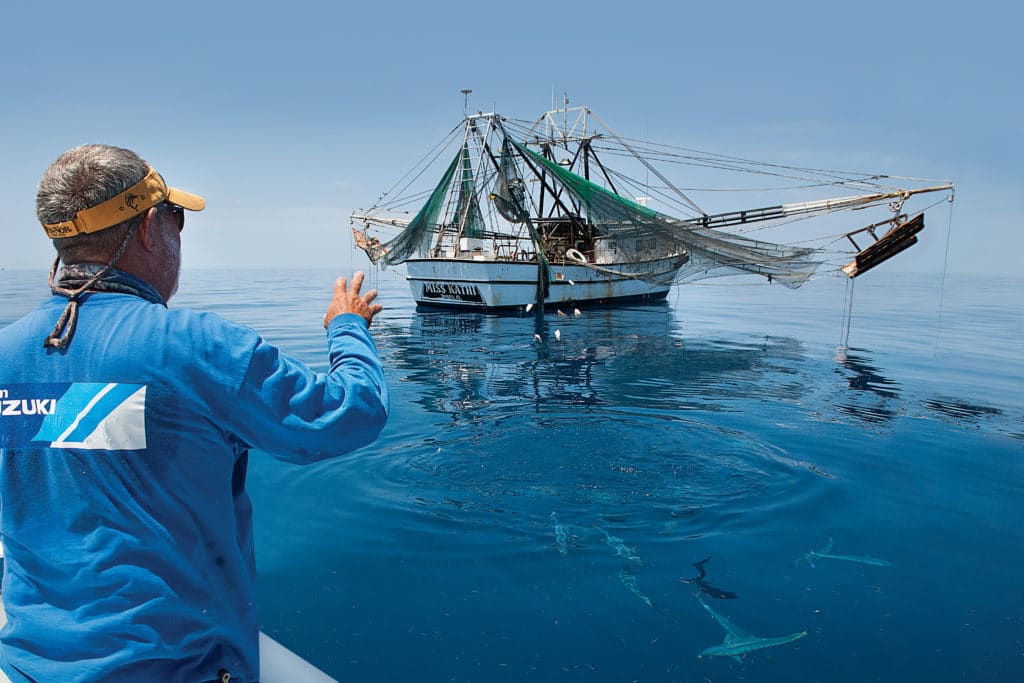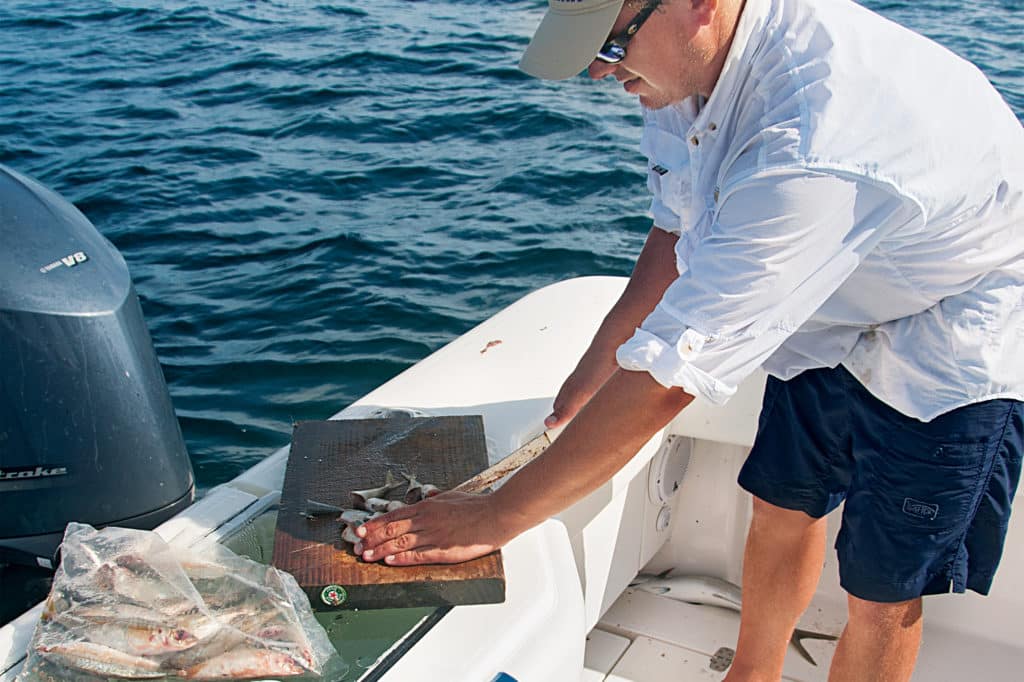
We all know chumming helps us catch more fish, but you can’t always simply toss a block of frozen chum overboard in a couple chum bags and wait for the fish to appear. That works sometimes, but not always. Optimizing the effectiveness of a particular type of chum involves a certain amount of strategy.
Fishing with chum takes many different forms, but for practical purposes, we’ll look at four distinct types: frozen-block chumming, chunking, live-bait chumming, and fish-oil attractants. These can be used alone or in combination — and sometimes, the combination makes the difference.
Use Frozen Chum Blocks to Catch More Fish
The frozen chum block often dominates the saltwater chumming game because it’s easy, relatively cheap and quite effective for a wide range of species. Everything from snappers and groupers to king mackerel and cobia respond to it. Bait species love chum too, and different techniques exist for different species.
In the Florida Keys, innovative fishermen have developed refined techniques to catch everything from ballyhoo to mutton snapper. For ballyhoo, a frozen block of baitfish chum in a saltwater fishing chum bag often does the trick, bringing the halfbeaks within range of a cast net, or you can use a tiny gold hook tipped with a piece of shrimp.
For other bait species, more stealth becomes necessary. With cigar minnows (round scad), for example, captains leave a menhaden chum block out to thaw all night before a trip. This “soft chum” gets mixed with masonry sand and water in a bucket to create a pasty mud, which is then sprinkled on the surface behind the boat and pressed into sand balls. These balls get dropped overboard, and the baits swarm into the cloud the dissolving balls create. The sand obscures the bait’s vision so they don’t see the cast net descending over them.
Sand balls also help catch bottomfish like grouper, and yellowtail and mutton snappers. The weight of the sand carries the chum to the bottom and helps disperse the scent over a wide area. Savvy skippers place their hook and bait inside the sand ball so it gets carried down and is slowly revealed as the sand ball dissolves. As the fish enter the cloud in response to the chum, they find the bait.

Live-Bait Chumming for Saltwater Fishing
You need a plentiful supply of live bait to chum with them, but many people throw too many baits to be effective. When fishing for tuna, cobia, king mackerel or even dolphin, a slow and steady stream of live bait usually works best. If you dump a huge load of bait, you can scatter the fish and lose them as they chase the fleeing bait.
Better to keep a steady stream going in the hopes of luring the target species right to your transom, where you can cast a live bait with a hook, or a lure, in their direction. Judicious use of your live-bait supply keeps the fish hanging around the boat, allowing you to pick them off over an extended period of time.
Pilchards (scaled sardines), Spanish sardines, finger mullet and menhaden get pressed into service as live chum quite frequently, but other species work too. As in most fishing, use what’s most readily available in your particular area.
How to Chunk and Cut Baitfish for Chumming
Cutting up a large supply of baitfish into chunks and creating a steady stream of those chunks in the current attract tuna, wahoo, dolphin, cobia and much more from a long way off. As with live-bait chumming, don’t over chum; keep a constant flow of chunks going, either from a drifting boat or on the anchor if it’s shallow enough.
Effective chunking involves properly drifting hook baits back to drift with the chum you’ve deployed. It helps to cut a groove in the bait chunk so you can conceal your hook. Then, make sure the hook bait drifts at the same pace as the chum chunks by pulling line from the rod tip by hand, making it coil on the surface next to the boat. Doing so prevents the line from coming tight to the bait and making it drift in an unnatural fashion. When the line takes off, that’s a bite; simply engage the drag and set the hook.
Fish-Oil Attractants for Chum and Fishing
Use fish oil, typically menhaden oil chum, in conjunction with frozen-block chum when anchored or by itself when trolling. Successful king fishermen devise innovative ways to disperse the oil slowly, because a little goes a long way. A small amount of oil creates a huge slick, but kingfish can smell it from a great distance and will come to investigate.
And that’s the point of any kind of chumming: to get the attention of a wary fish and bring it into range. Experimenting with chumming techniques in your home waters will undoubtedly help you attract and catch more of the fish you’re after.









